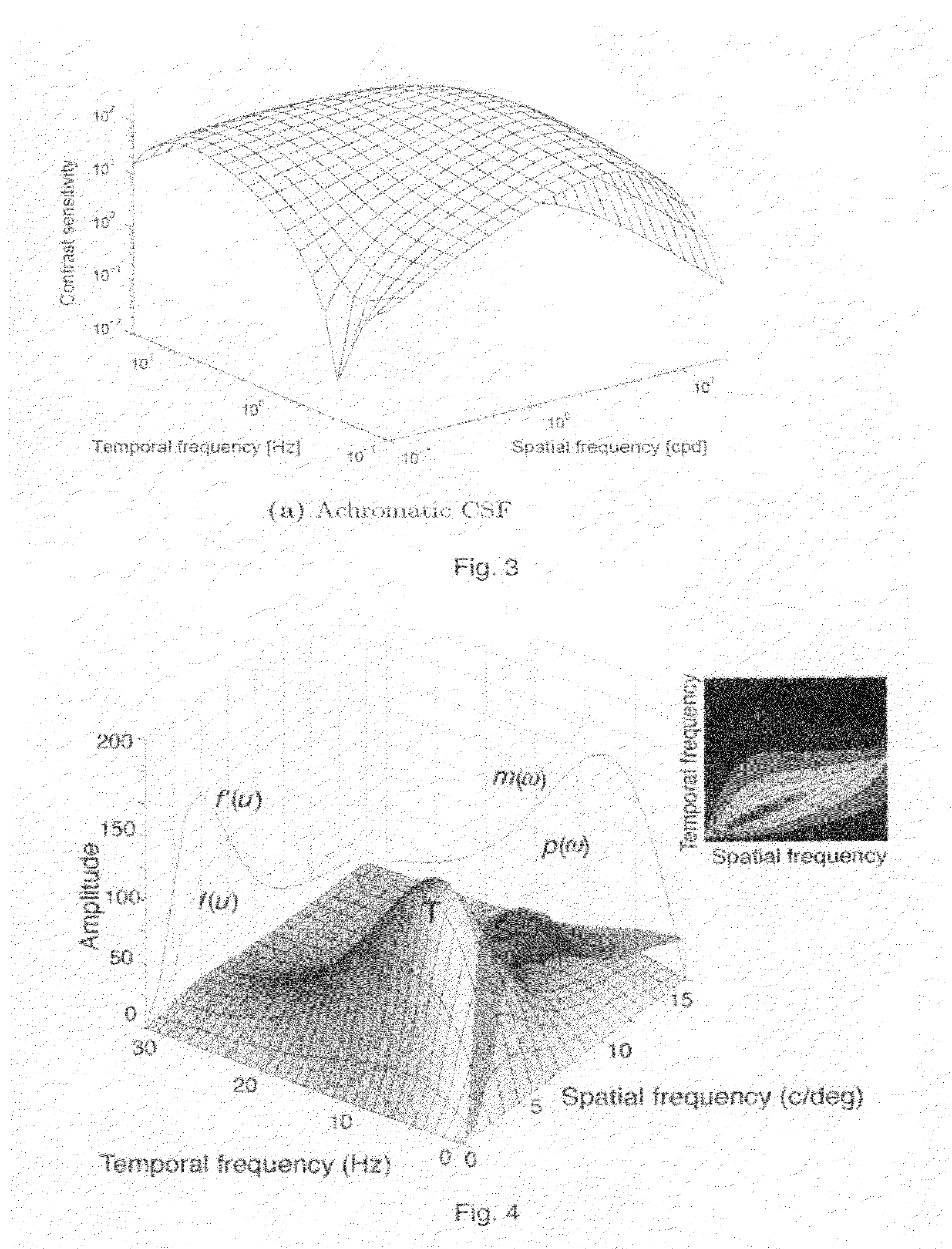Method for sequentially displaying a colour image
a colour image and sequential technology, applied in the field of sequential display of colour images, can solve problems such as disturbing perception of colour break-up defects, and achieve the effects of reducing the sensitivity of temporal contrast in these hues, reducing the colour break-up defect, and reducing the sensitivity to temporal contras
- Summary
- Abstract
- Description
- Claims
- Application Information
AI Technical Summary
Benefits of technology
Problems solved by technology
Method used
Image
Examples
Embodiment Construction
[0038]A device for displaying images capable of implementing the display method according to the invention will now be described. In reference to FIG. 5, this device comprises:
[0039]a polychromatic light source 1 with its reflector mirror, sending out an illumination beam of approximately white hue,
[0040]a wheel 2 with two segments for colour filtering driven by a motor and positioned in such a manner that each filtering segment is illuminated successively by the illumination beam,
[0041]a light tube for light integration 3, receiving, via its inlet section, the illumination beam at the outlet of a filtering segment, and providing, at its outlet section, a uniformly illuminated surface,
[0042]three microimagers 5,
[0043]a relay optical system 4, prism sets 6 and, if necessary, suitable colour filters to image simultaneously the outlet surface of the integration light tube 3 on each of the three microimagers 5, and suitable so that a first microimager is illuminated by an illumination b...
PUM
 Login to View More
Login to View More Abstract
Description
Claims
Application Information
 Login to View More
Login to View More - R&D
- Intellectual Property
- Life Sciences
- Materials
- Tech Scout
- Unparalleled Data Quality
- Higher Quality Content
- 60% Fewer Hallucinations
Browse by: Latest US Patents, China's latest patents, Technical Efficacy Thesaurus, Application Domain, Technology Topic, Popular Technical Reports.
© 2025 PatSnap. All rights reserved.Legal|Privacy policy|Modern Slavery Act Transparency Statement|Sitemap|About US| Contact US: help@patsnap.com



